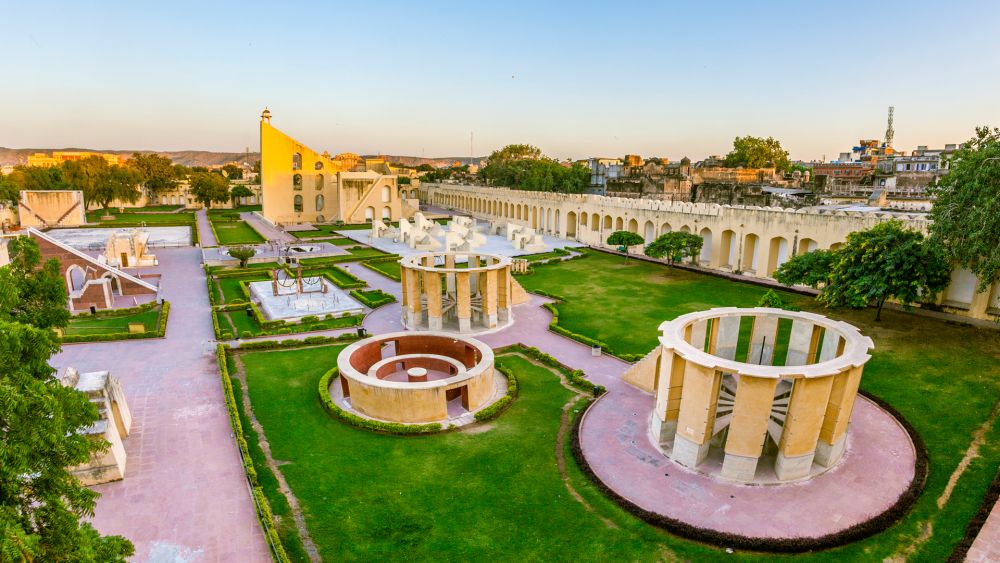

The Jantar Mantar Observatory in Jaipur, Rajasthan, is not just an astronomical wonder but also a significant historical monument that has drawn curious travelers and scholars from around the world for centuries. Constructed by Maharaja Sawai Jai Singh II between 1724 and 1734, the Jantar Mantar in Jaipur is part of a collection of five such observatories located across North India.
Sawai Jai Singh II’s passion for astronomy and the sciences led to the creation of this structure, which essentially functions as a giant sundial and includes a collection of nineteen architectural astronomical instruments. It has been a hub for scientific explorers and tourists alike who are interested in both the technical aspects and the historical backdrop of the observatory.
The recognition of the Jantar Mantar as a UNESCO World Heritage Site in 2010 marked a new chapter in its tourism history, as it gained prominence on a global scale. This honor highlighted the observatory’s unique blend of science, art, and heritage and helped in conserving its complex for future generations.
With the rise of cultural and educational tourism, Jantar Mantar sees a diverse group of visitors, ranging from history enthusiasts to amateur astronomers and school groups. The visitor experience is often enriched with guided tours, which explain the scientific principles and historical context behind each instrument.
As experiential travel has grown in popularity, there has been a marked interest in attending events such as astronomy workshops and celestial observations that are sometimes held at the observatory. Travelers are also embracing digital enhancements, including augmented reality (AR) and virtual reality (VR) experiences, to gain a deeper understanding of celestial movements as observed through the ancient instruments.
The observatory has not only been preserved as a historic site but also continues to function as an educational platform. It stands as a testament to the advanced scientific knowledge and architectural expertise that existed in India well before the modern era.
Jantar Mantar is situated near the City Palace and Hawa Mahal in the heart of Jaipur, making it highly accessible to tourists. The site is open year-round and is especially popular during the winter months when the weather is conducive to outdoor exploration.
Efforts to enhance tourist facilities have seen the establishment of visitor centers, the provision of multilingual audio guides, and the maintenance of the park surrounding the observatory, ensuring a pleasant visit for both domestic and international tourists.
The future of tourism at Jantar Mantar appears promising, with continuous efforts directed at preservation and enhancement of visitor experiences. Education and engagement are key trends driving the tourism sector here, with an emphasis on interactive learning.
As global interest in sustainable and responsible tourism grows, efforts are being made to manage the site in a way that upholds its integrity while accommodating the curiosity it inspires in visitors from across the world. Jantar Mantar continues to be a shining example of how historical sites can be leveraged to promote cultural understanding and scientific inquiry.